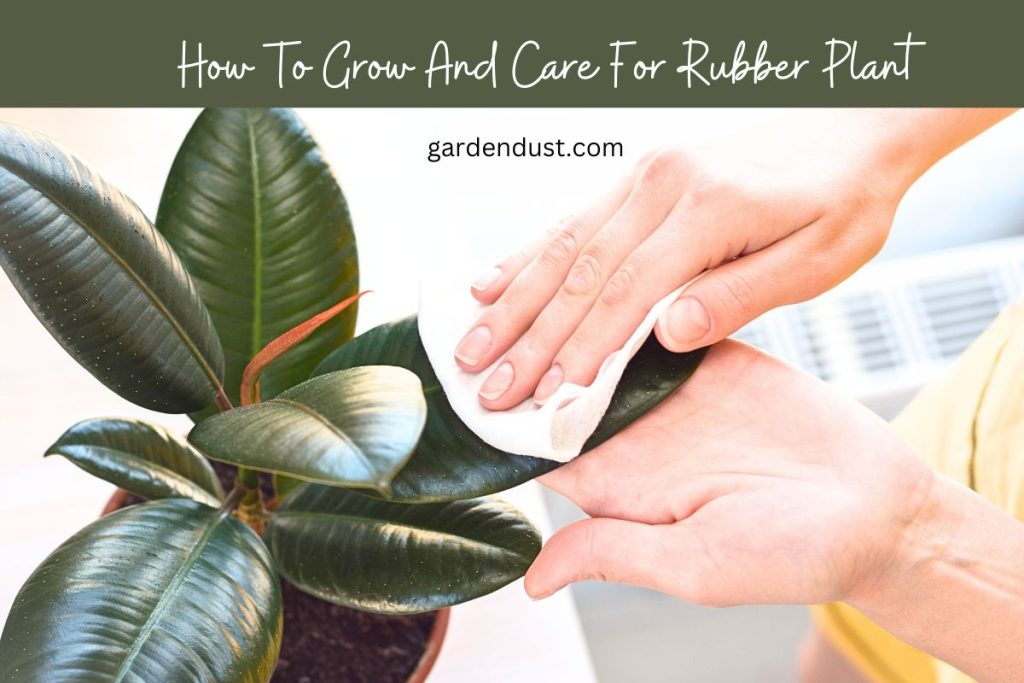Rubber plants, known for their attractive foliage and air-purifying qualities, are a popular choice among indoor plant enthusiasts. These versatile plants are not only aesthetically pleasing but also relatively easy to care for, making them an excellent addition to homes and offices alike. In this guide, we’ll explore How To Grow And Care For Rubber Plant (Ficus elastica).
Native Habitat and Botanical Name
The Rubber Plant, scientifically known as Ficus elastica, is native to the rainforests of Southeast Asia, particularly in countries like India, Nepal, Bhutan, Myanmar, Malaysia, and Indonesia. In its natural habitat, it can grow to impressive heights, often reaching up to 100 feet. However, when grown as a houseplant, it typically remains more compact, making it manageable for indoor spaces.
Varieties of Rubber Plants
Several varieties of Rubber Plants are cultivated for their unique leaf patterns and colors. Some popular varieties include:
- Ficus elastica ‘Tineke’: This variety boasts cream and green variegated leaves, adding a touch of elegance to any indoor setting.
- Ficus elastica ‘Burgundy’: As the name suggests, this variety features striking dark burgundy or bronze-colored leaves, making it a standout choice for those seeking a more dramatic look.
- Ficus elastica ‘Robusta’: Known for its large, glossy green leaves, this variety is a classic favorite among Rubber Plant enthusiasts.
READ ALSO:-How To Grow And Care For Caladium
Caring for Your Rubber Plant
Proper care is essential for the health and longevity of your Rubber Plant. Here are some key factors to consider:
- Light:
Rubber Plants thrive in bright, indirect light. Avoid direct sunlight, as it can scorch the leaves. If your plant is not getting enough light, it may become leggy and lose its vibrant color.
- Well-Draining Soil:
Rubber Plants prefer a well-draining soil mix that allows excess water to pass through quickly, preventing waterlogged roots and root rot.
- Potting Mix:
A good potting mix for Rubber Plants can consist of a blend of ingredients like peat moss, perlite, and pine bark.
Commercial potting mixes formulated for houseplants are also suitable.
- pH Level:
The ideal pH range for the soil of Rubber Plants is slightly acidic to neutral, around 6.0 to 7.0. Most standard potting mixes fall within this range.
- Aeration:
Ensure that the soil mix is well-aerated. This allows the roots to breathe and promotes healthy growth.
Adding perlite or coarse sand to the soil can improve aeration.
- Temperature:
Maintain a consistent temperature range of 60-75°F (15-24°C) for your Rubber Plant. Avoid exposing it to drafts or sudden temperature fluctuations.
- Watering:
Allow the top inch or two of the soil to dry out between waterings. Overwatering can lead to root rot, while underwatering can cause the leaves to wilt. Be sure to use a well-draining potting mix.
- Humidity:
Rubber Plants appreciate higher humidity levels, so consider using a humidity tray or a room humidifier, especially during the dry winter months.
- Repotting:
Repot your indoor plants when they become root-bound or outgrow their containers. Typically, this is done every 1-2 years.
Choose a slightly larger pot with good drainage and fresh potting mix.
- Pest and Disease Management:
Keep an eye out for signs of pests (e.g., spider mites, mealybugs) and diseases (e.g., mold, mildew). Treat issues promptly with appropriate remedies.
- Rotate Your Plants:
Rotate potted plants periodically to ensure even growth. This prevents them from leaning toward the light source and becoming lopsided.
- Fertilizing:
Feed your Rubber Plant with a balanced, water-soluble fertilizer every 4-6 weeks during the growing season (spring and summer). Reduce or cease fertilization during the dormant winter months.
- Pruning:
Trim your Rubber Plant to maintain its shape and encourage bushier growth. Remove any yellowing or dead leaves promptly.
Propagation
You can propagate Rubber Plants through several methods:
- Stem Cuttings: This is the most common method. Cut a healthy stem just below a node and place it in a container with water until roots develop. Once the roots are well-established, transplant the cutting into a pot with soil.
- Air Layering: This technique involves making a small incision in a healthy stem, wrapping it with moist sphagnum moss, and covering it with plastic wrap. Roots will form within a few weeks, and you can then cut the stem below the rooted section and plant it.
- Leaf Cuttings: Although less common, you can propagate Rubber Plants from individual leaves. Cut a healthy leaf into sections, allow them to callus for a day or two, and then plant them in a pot with soil.
Growing and caring for a Rubber Plant can be a rewarding experience. With the right attention to light, temperature, watering, and feeding, your Rubber Plant will thrive and provide you with years of lush, green beauty. Additionally, the various varieties and propagation methods allow you to explore and expand your collection of these striking houseplants. Whether you’re a seasoned plant enthusiast or a beginner, the Rubber Plant is an excellent choice for adding natural beauty to your indoor spaces. Happy Gardening…







